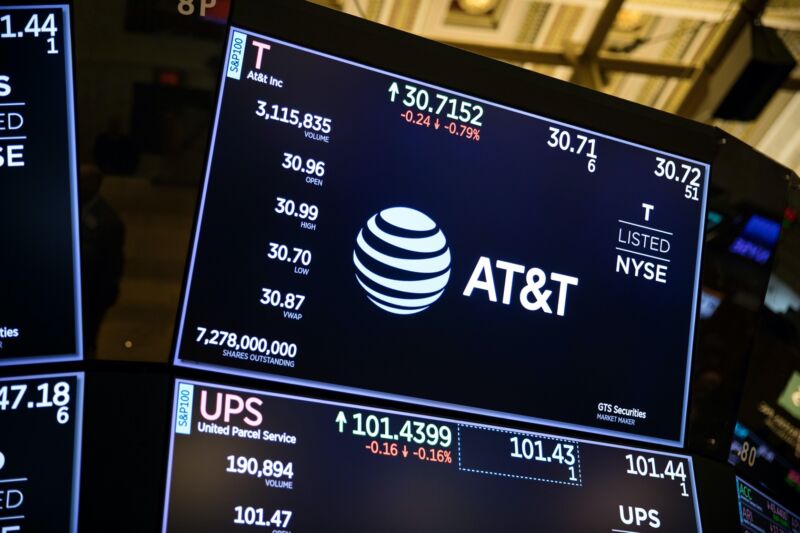
AT&T lost 627,000 TV customers in Q3 2020, an improvement over previous quarters as the company continues its attempt to sell its failing DirecTV division.
In earnings results reported today, AT&T said it lost 590,000 "Premium TV" customers, a category that includes DirecTV satellite, U-verse wireline TV, and the online service known as AT&T TV. AT&T also lost 37,000 customers from AT&T TV Now, the streaming service formerly known as DirecTV Now.
The Premium TV loss of 590,000 customers in Q3 is the best result since AT&T lost 544,000 subscribers in Q1 2019. AT&T's Premium TV losses ranged from 778,000 to 1.16 million customers per quarter from Q2 2019 through Q2 2020. AT&T currently has 17.1 million Premium TV customers, down from over 25 million in early 2017.
"The decline is a significant improvement over prior-year trends," AT&T CFO John Stephens said in a call with investors today.
The AT&T TV Now streaming-service loss of 37,000 customers was also an improvement, but AT&T is running out of customers to lose in that segment. The service has 683,000 subscribers left from the 1.86 million it had two years ago.
DirecTV still needs a buyer
AT&T's massive TV losses spurred its ongoing attempt to sell DirecTV, which it purchased for $49 billion in 2015. First-round bids for DirecTV reportedly valued the satellite TV unit at around $15.75 billion. There haven't been any major updates since the New York Post reported two weeks ago that AT&T "invited a handful of suitors into the second round of an auction of the struggling satellite-TV broadcaster."
The AT&T TV streaming service—which mimics cable TV with hidden fees, contracts, and big second-year price hikes—is apparently doing better than DirecTV. AT&T doesn't report customer losses for each service in the Premium TV category, but it said that gains in AT&T TV "helped offset" the customer losses in DirecTV and U-verse.
AT&T attributed the 590,000-customer net loss to "lower churn and [a] higher quality base," meaning that fewer people dropped service and the customers who stayed are paying more than those who left. In the last quarter, the average revenue per user for AT&T Premium TV went up from $124.98 to $130.55 per month.
AT&T does better with HBO Max, broadband
AT&T says it is heading in the right direction with its five-month-old HBO Max service, with 8.6 million "activations" in Q3. Activations include people who subscribed to HBO before HBO Max existed, as those customers can activate HBO Max and continue paying the same price. Activations also include people who get HBO Max for free as part of subscriptions to certain AT&T mobile, home-Internet, and DirecTV plans. AT&T reported 4.1 million HBO Max activations in Q2.
HBO and HBO Max subscribers combined number 38 million in the United States and 57 million worldwide, AT&T said. (HBO Max is still US-only.) The 38 million figure for HBO in the US "exceeds [the] previously announced year-end target of 36 million," AT&T said. HBO Max's standard price is $15 a month.
On the home-Internet front, AT&T added 158,000 subscribers in Q3, bringing its total to 14.1 million. The gains came entirely in AT&T's fiber-to-the-home product, which added 357,000 subscribers to hit a total of 4.68 million. AT&T's fiber-to-the-node and DSL services both lost customers, leaving them at 8.98 million and 440,000 subscribers, respectively. AT&T recently announced it will no longer offer DSL to new customers, while the ones who remain are stuck with slow, unreliable service.
Companywide, AT&T reported Q3 revenue of $42.3 billion, down from $44.6 billion in the year-ago quarter. AT&T reported net income of $2.8 billion, down from $3.7 billion year over year. AT&T shares rose today but are down about 27 percent in 2020.
reader comments
133